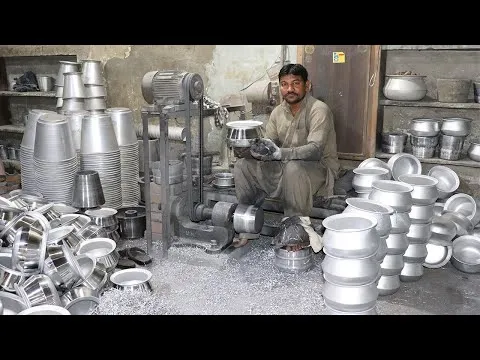
The Manufacturing Process: How to Make Stainless Steel
Once the raw materials are gathered, the rest of the stainless steel manufacturing process can begin. Here are the basic steps:
Melting the Raw Materials. The different stainless steel materials are placed in a furnace (typically an electric furnace for modern stainless steel manufacturing applications) and heated to their melting point. This process can take anywhere between 8 and 12 hours, according to metalsupermarkets.com and other sources. Once the metal is molten, stainless steel manufacturing can proceed to the next step.
Removal of Excess Carbon. The molten material placed into a vacuum oxygen decarburization (VOD) or argon oxygen decarburization (AOD) system to remove excess carbon. Depending on how much carbon is removed, this process could result in a standard or a low-carbon variant of the alloy—for example, 304 versus 304L stainless steel. This can affect the tensile strength and hardness of the final product.
Tuning or Stirring. To help fine-tune the quality of the final product, the molten steel may be stirred to help distribute and/or remove specific stainless steel components from the mixture. This helps to ensure that the stainless steel is of uniform quality and will meet the specifications required by end users (like Marlin Steel).
Forming the Metal. As the stainless steel begins to cool, it is put through a variety of forming processes—starting with hot rolling while the steel is still above its crystallization temperature. Hot rolling helps get the steel into a rough shape, and is often used to create billets or blooms of metal. To create metal blooms or billets of precise dimensions, the stainless steel may be cold rolled.
Heat Treatment/Annealing. To relieve internal stresses and alter the stainless steel’s mechanical properties, it may be annealed (heated and cooled under controlled conditions). If annealed, the steel may need to be descaled so the protective oxide layer isn’t compromised.
Cutting and Shaping. After the annealing process, stainless steel is put through a variety of cutting and shaping processes to create an ideal final product for the application. The specific operations used to cut the stainless steel will vary depending on the size and shape of the billet/bloom and the desired final product. For example, the steel may be cut mechanically with large metal shears if making thick metal plates. Meanwhile, CNC punch or laser cutting machines may be used to cut shapes out of thinner metal sheets. Marlin Steel’s manufacturing team often creates custom metal cutouts from sheet metal plates by using cutting lasers and CNC punch machines.
Applying Surface Finishes. The stainless steel manufacturer may apply different surface finishes to their stainless steel billets, blooms, or wires before shipping them to other manufacturers. The specific finish applied will vary depending on the steel’s intended use—but one of the most common surface finishes is simply grinding down the surface to remove impurities and make it smoother.
Quality Control
Before finishing a stainless steel basket or product, the engineers at Marlin Steel run finite element analyses on each and every design. For maintaining quality control, Marlin Steel employs a top-of-the-line FEA software from Autodesk because it provides incredibly accurate simulations in mere minutes—saving considerable time, labor, and materials compared to manual testing processes.
In this FEA analysis process, Marlin’s engineers can program the software to simulate different distributions of weight on the basket at different temperatures and after exposure to specific chemicals.
By testing these effects, the team at Marlin Steel can spot potential issues before finishing the job, ensuring the customer receives a stainless steel basket of the highest quality.
#Palnet #neoxian #proofofbrain #leofinace #3speak #cubDefi #polycub #cub #development #oneup #vyb #leo